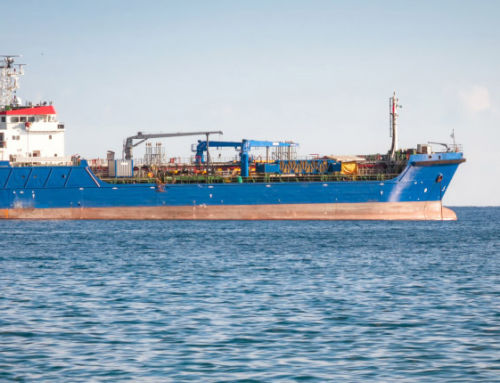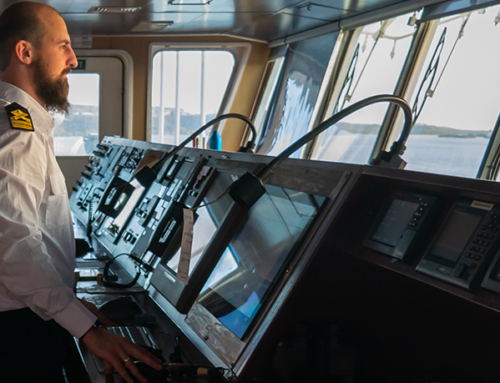Hey Google, call John.
Alexa, turn on my lights.
Cortana, add a conference call to my calendar.
Hey Siri, text Mary I’m running 5 minutes late for the meeting.
Just a few years back, we couldn’t have imagined saying something like this to machines. Technology has radically changed the way we get things done. It was the phenomenal advancements in communication and collaboration technologies that saw companies through extended lockdowns amid the pandemic.
 A.P. Møller – Maersk has partnered with IBM to establish a blockchain platform, TradeLens, addressing global supply chains and trading. The platform has already onboarded over 90 organizations, including cargo owners, liner operators, customs authorities, and major ports.
A.P. Møller – Maersk has partnered with IBM to establish a blockchain platform, TradeLens, addressing global supply chains and trading. The platform has already onboarded over 90 organizations, including cargo owners, liner operators, customs authorities, and major ports.The marine industry, which has historically been a tech-laggard, has gradually started adopting new technologies. Cloud computing and collaboration tools have become mainstream in shipping operations.
Maritime professionals can be increasingly heard discussing cloud computing, virtual assistants, machine learning, artificial intelligence, IoT (internet of things) and even blockchain and virtual reality.
Swimming Against the Tide
A world without computers and smartphones connected to the internet seems almost unreal to most people. But that’s been the case for seafarers and ships. Connectivity is still expensive, intermittent, and slow. Given the challenges of internet access in the middle of the ocean, only around 10% of the world’s shipping fleet has connectivity, says a report by Ericsson.
The highly distributed nature of the fleet and crew, the scale of the industry and the complex logistics chains make tech adoption even more challenging.
No wonder then that most ships still have “analogue” operations, which is incredibly disruptive for shore-to-ship communication. Currently, the communication gaps lead to huge inefficiencies and loss of revenue. An estimated $30 billion worth of value is eroded from companies in the shipping industry that fail to exchange information in a timely and efficient way, says a McKinsey partner in an interview with Informa Connect.
All Hands on Deck
Despite the challenges, the marine industry is embracing technology. To begin with, innovative technologies for internet access have started emerging, accelerating the industry’s digitalization journey. Faster and cheaper connectivity is the cornerstone of digitalization of the sector.
Cost Savings
The shipping industry has swiftly moved from investing in expensive software to SaaS. Software-as-a-service, or a centrally hosted solution that works on a subscription-based license, has made inroads into the sector, given that this model promises faster time-to-benefit and enormous cost reduction.
 Increased productivity and efficiency from digital technology adoption can lower costs by anywhere between 8% and 34%.
Increased productivity and efficiency from digital technology adoption can lower costs by anywhere between 8% and 34%.~according to research by BVL International – The Global Supply Chain Network
While SaaS allows companies to save millions of dollars on custom development of solutions and maintaining IT expertise, it does pose the risk of failure due to challenges in tech adoption. Many of these solutions are cumbersome to use, having sacrificed usability for comprehensiveness. Some are attempts to fit square pegs in round holes. This is because these solutions are generic and not designed specifically for the maritime industry. Even when they are meant for the marine industry, the solutions are mostly created by software experts, rather than people who have a deep understanding of the unique requirements of this sector.
The companies that have the right software in place enjoy massive competitive advantages. With everyday tasks in ships, like work and rest hours management, moving to a cloud-based platform, these companies benefit from substantial cost savings, enhanced productivity, more efficient operations, and easy compliance.
Data-Driven Efficiency
With digitalization, immense amounts of data can be gathered from across various touchpoints, which can be used to enhance decision making, monitoring, verification, and control. For instance, vessels with digitized systems have significantly lowered fuel costs by managing speed. Plus, shorter wait times at ports have also led to lower fuel emissions, which is good for everyone.
With advances in technology, data from different processes and operations no longer needs to be manually collated and analyzed. Data is collected automatically and in real-time from ships and is visible on customizable dashboards. Data can also be downloaded in a detailed, yet easy-to-understand report. With such solutions, timely and informed decisions can be made.
Compliance with Environmental Regulations
Environmental regulations have become increasingly more stringent, particularly with the establishment of the IMO 2025, IMO 2030, and IMO 2050 environmental goals. By retrofitting vessels with sensors, companies can gain insights into each vessel’s fuel consumption, pollution levels, engine performance and bunkering. This can then help vessel operators take timely decisions to comply with the latest environmental regulations.
Maritime Single Window
The push for digitization has also been fueled by the FAL Convention requirements for a minimum standard of digitization, including the use of a Maritime Single Window by vessel operators and ports to exchange information digitally, according to says an article by IMO. This aims to prevent any duplication of data, while reducing the administrative burden that is inherent in international shipping. Earlier, information was submitted via different paper forms and systems, making the entire process cumbersome and time consuming.
The maritime industry is responsible for transporting over 90% of the world’s merchandise trade, which totals about 11 billion tons of cargo annually. Digitalizing the industry could lead to financial benefits globally. In addition to improving efficiency, it would also enhance sustainability of maritime operations. It might seem like a daunting task to completely transition to digital solutions. However, the process can be made much easier, with lower resistance from seafarers and vessel operators alike, if it is done in small steps.






Leave A Comment